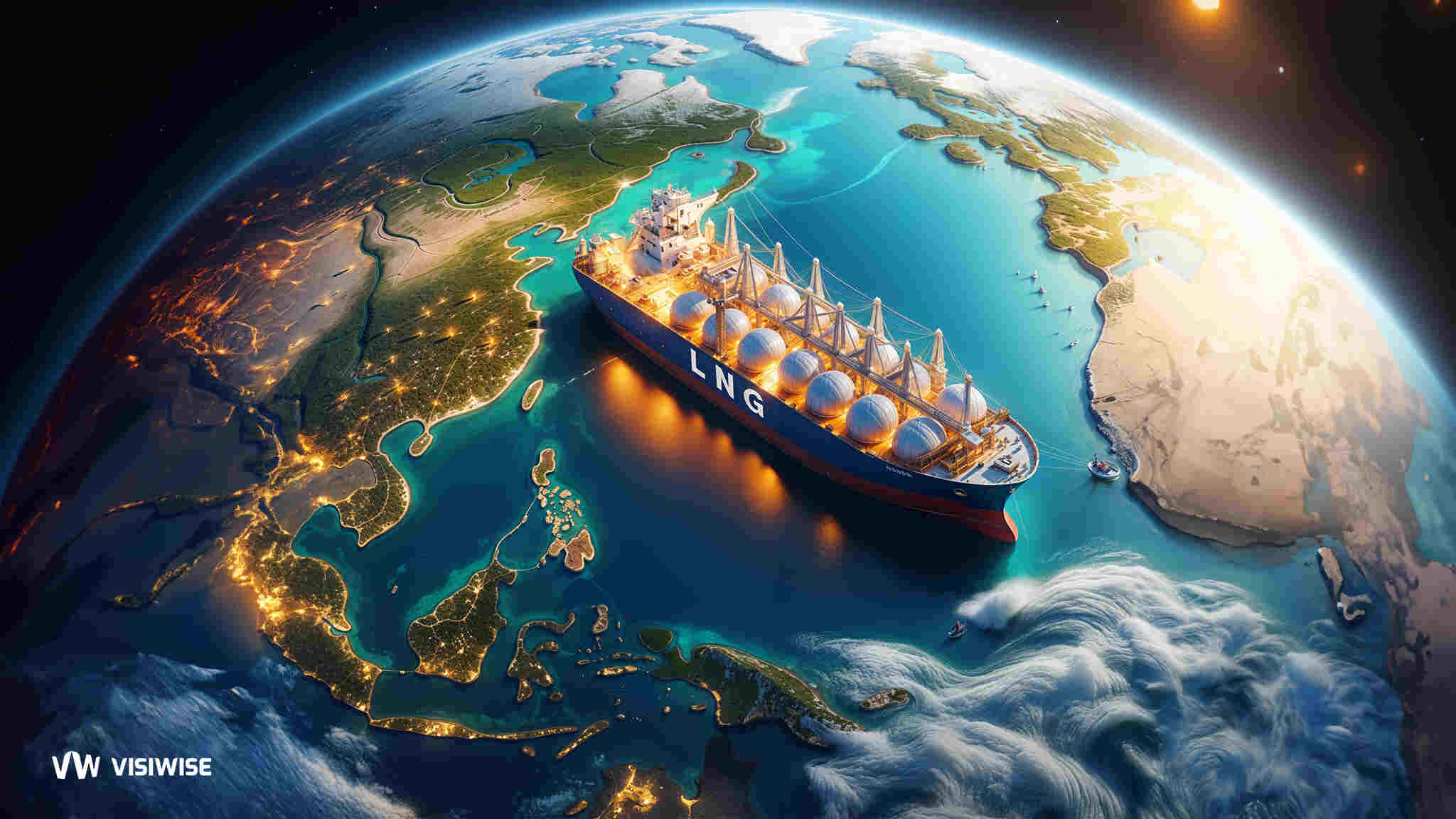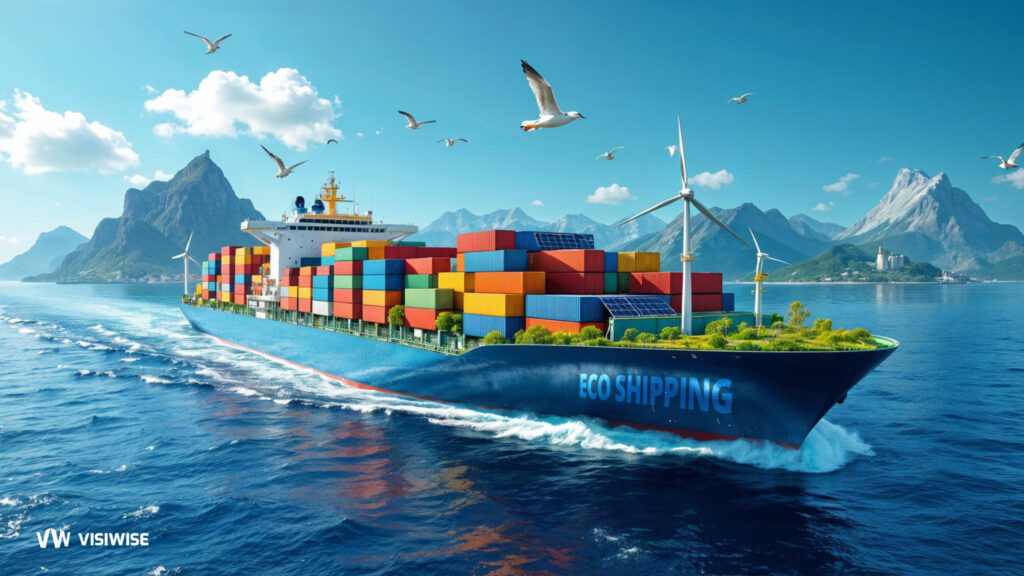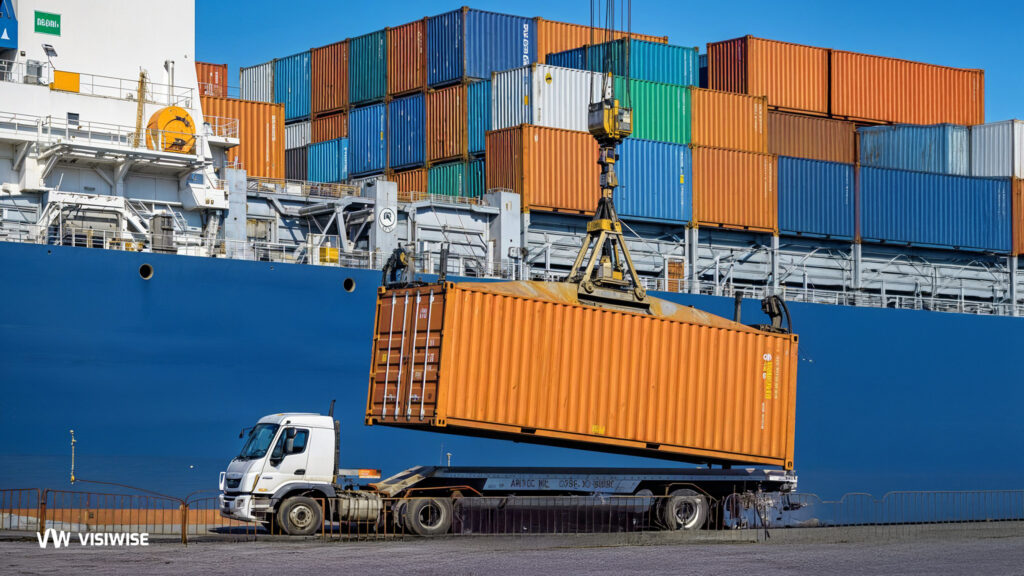Liquefied Natural Gas (LNG) shipping has become a cornerstone of the global energy supply chain, enabling the efficient and safe transportation of natural gas across vast oceans. The industry’s growth mirrors the increasing demand for cleaner energy sources, with LNG playing a pivotal role in the transition from coal and oil to more sustainable options. This article delves into the intricacies of LNG shipping, exploring its historical development, technological advancements, economic impact, regulatory environment, and future prospects.
Historical Development of LNG Shipping
Early Beginnings
The concept of LNG shipping dates back to the mid-20th century, with the first successful transportation of LNG occurring in 1959. The Methane Pioneer, a converted World War II freighter, carried LNG from Lake Charles, Louisiana, to Canvey Island, United Kingdom. This pioneering voyage demonstrated the feasibility of transporting natural gas in its liquefied state, where it occupies about 1/600th of its gaseous volume.
This early success laid the groundwork for the development of the LNG industry. The journey of the Methane Pioneer was not just a technical achievement but also a significant commercial milestone. It demonstrated to energy companies and investors that LNG could be a viable solution to the challenges of transporting natural gas over long distances, particularly to regions that lacked pipeline infrastructure.
Growth and Expansion
The 1970s and 1980s saw significant growth in LNG shipping, driven by the oil crises that heightened the need for alternative energy sources. Japan emerged as a major importer, establishing long-term contracts with suppliers in Indonesia, Malaysia, and Brunei. The construction of specialized LNG carriers, equipped with advanced insulation systems and reliable containment technologies, further facilitated this growth.
During this period, the LNG industry saw substantial investments in infrastructure, including the development of export terminals, liquefaction plants, and regasification facilities. These investments were crucial for establishing a reliable and efficient global LNG supply chain. The long-term contracts between exporters and importers provided the financial stability needed to support these large-scale infrastructure projects.
Modern Era
In recent decades, LNG shipping has entered a modern era characterized by technological innovation and expanded global reach. The development of larger and more efficient LNG carriers, such as Q-Flex and Q-Max vessels, has revolutionized the industry. These ships, capable of carrying up to 266,000 cubic meters of LNG, have reduced transportation costs and enhanced the economies of scale.
The introduction of floating LNG (FLNG) units has further transformed the industry. FLNG units allow for the liquefaction, storage, and offloading of natural gas directly at offshore gas fields, eliminating the need for extensive onshore infrastructure. This innovation has made it possible to develop gas resources in remote and challenging locations, further expanding the reach of the LNG supply chain.
Technological Advancements
Ship Design and Construction
Modern LNG carriers are marvels of engineering, designed to safely transport LNG at temperatures of -162°C. Key design elements include:
- Containment Systems: The two primary types are the Membrane and Moss systems. Membrane systems, featuring thin layers of insulation and a primary barrier, are widely used for their capacity and efficiency. Moss systems, with spherical tanks, offer robust protection and stability.
- Membrane Systems: These systems use a thin, flexible membrane to contain the LNG, supported by insulation layers. The membrane is usually made of materials like Invar, which can withstand the cryogenic temperatures of LNG. The insulation minimizes heat ingress, reducing the amount of LNG that boils off during transit.
- Moss Systems: Named after their inventor, the Moss Maritime Company, these systems use independent, spherical tanks to store LNG. The tanks are constructed from aluminum or nickel steel and are mounted within the hull of the ship. The spherical shape provides excellent structural integrity and resistance to sloshing.
- Propulsion Systems: The transition from steam turbines to dual-fuel diesel-electric (DFDE) and slow-speed diesel engines has improved fuel efficiency and reduced emissions. Modern LNG carriers often use boil-off gas (BOG) as fuel, enhancing sustainability.
- Dual-Fuel Diesel-Electric (DFDE) Engines: These engines can operate on both diesel fuel and natural gas. The use of BOG as fuel not only reduces reliance on conventional fuels but also helps manage the boil-off gas generated during transit.
- Slow-Speed Diesel Engines: These engines are highly efficient and have lower fuel consumption compared to older steam turbines. They also produce lower emissions, contributing to the industry’s environmental goals.
- Boil-Off Gas Management: Innovative technologies for managing BOG, such as re-liquefaction plants and gas combustion units, have improved operational efficiency and environmental performance.
- Re-liquefaction Plants: These systems capture and re-liquefy the boil-off gas, allowing it to be returned to the cargo tanks. This process minimizes the loss of LNG and maximizes the cargo delivered to the destination.
- Gas Combustion Units: These units safely burn excess boil-off gas, preventing it from being vented into the atmosphere. This technology helps reduce greenhouse gas emissions and complies with environmental regulations.
Loading and Unloading Infrastructure
The development of specialized LNG terminals has been crucial in facilitating the safe and efficient transfer of LNG between carriers and storage facilities. These terminals are equipped with advanced loading arms, vapor recovery systems, and safety protocols to handle the high-pressure and low-temperature conditions of LNG.
- Loading Arms: These articulated arms connect the LNG carrier to the terminal, allowing for the transfer of LNG. They are designed to accommodate the movement of the ship and ensure a secure and leak-free connection.
- Vapor Recovery Systems: These systems capture the natural gas vapors generated during the loading and unloading process. The recovered gas is either re-liquefied or used as fuel, reducing emissions and improving efficiency.
- Safety Protocols: LNG terminals operate under strict safety standards to prevent accidents and ensure the protection of personnel and the environment. This includes measures such as emergency shutdown systems, fire and gas detection, and robust training programs for operators.
Safety and Environmental Measures
Safety is paramount in LNG shipping. Modern carriers are equipped with multiple layers of safety systems, including emergency shutdown mechanisms, gas detection systems, and advanced navigation tools. Furthermore, the industry adheres to stringent international standards, such as those set by the International Maritime Organization (IMO).
- Emergency Shutdown Systems (ESD): These systems automatically halt operations in the event of a detected fault or hazardous condition, preventing accidents and minimizing risks.
- Gas Detection Systems: Continuous monitoring of the atmosphere within and around the LNG carrier helps detect any leaks or releases of natural gas, enabling prompt action to mitigate potential hazards.
- Advanced Navigation Tools: Modern LNG carriers are equipped with state-of-the-art navigation and communication systems to ensure safe passage through busy shipping lanes and adverse weather conditions.
Environmental considerations are also central to LNG shipping. The industry has made significant strides in reducing emissions through cleaner propulsion systems and better energy management. The use of LNG itself, as a lower-carbon alternative to coal and oil, contributes to global efforts to mitigate climate change.
- Emission Reduction Technologies: Innovations such as exhaust gas cleaning systems (scrubbers) and selective catalytic reduction (SCR) units help reduce emissions of sulfur oxides (SOx) and nitrogen oxides (NOx), respectively.
- Energy Efficiency Measures: The design of LNG carriers includes features such as optimized hull forms and advanced coatings that reduce drag and improve fuel efficiency. Additionally, waste heat recovery systems capture and reuse energy from engine exhaust gases, further enhancing efficiency.
Economic Impact
Global Trade and Market Dynamics
LNG shipping is integral to the global LNG trade, connecting producers in regions like the Middle East, Australia, and the United States with consumers in Asia, Europe, and Latin America. The flexibility of LNG transportation allows for diverse supply routes and the ability to respond to market fluctuations.
The LNG market is characterized by a complex web of trade relationships and supply chains. Major exporters like Qatar, Australia, and the United States compete to supply LNG to key importers such as Japan, South Korea, and China. The rise of new markets, particularly in developing countries, is also reshaping global trade dynamics.
Investment and Infrastructure Development
The growth of the LNG shipping industry has spurred substantial investment in infrastructure, including the construction of LNG carriers, export and import terminals, and regasification facilities. These investments have significant economic implications, creating jobs and stimulating economic activity in both producing and consuming regions.
- LNG Carrier Construction: Building an LNG carrier is a capital-intensive process, involving advanced shipyards and specialized engineering expertise. Each vessel represents a significant investment, often costing hundreds of millions of dollars.
- Export and Import Terminals: LNG terminals require substantial infrastructure, including storage tanks, pipelines, and loading/unloading facilities. These projects generate economic activity during the construction phase and create long-term operational jobs.
Regasification Facilities: Import terminals often include regasification units that convert LNG back into its gaseous state for distribution via pipelines. These facilities are critical for integrating LNG into domestic gas markets and ensuring a reliable supply.
Pricing and Contractual Trends
LNG pricing is influenced by various factors, including supply and demand dynamics, geopolitical developments, and alternative energy prices. Traditionally, LNG contracts were long-term and indexed to oil prices. However, the market has seen a shift towards more flexible short-term contracts and spot trading, driven by increased liquidity and the emergence of new players.
- Long-Term Contracts: Historically, LNG trade was dominated by long-term contracts (10-20 years) with prices linked to crude oil benchmarks. These contracts provided stability for both producers and consumers, supporting large-scale investments in LNG infrastructure.
- Spot Market: The growth of the spot market has introduced greater flexibility and transparency into LNG pricing. Spot trading allows buyers and sellers to respond to short-term market conditions, optimizing supply and demand balance.
- Hub-Based Pricing: The emergence of regional gas hubs, such as the Henry Hub in the United States and the National Balancing Point (NBP) in the UK, has facilitated the adoption of hub-based pricing for LNG contracts. This pricing model reflects local market conditions and offers an alternative to oil-indexed contracts.
Regulatory Environment
International Regulations
The LNG shipping industry operates within a stringent regulatory framework designed to ensure safety, security, and environmental protection. Key regulatory bodies include:
- International Maritime Organization (IMO): The IMO sets global standards for ship safety, security, and environmental performance. Relevant conventions include the International Convention for the Safety of Life at Sea (SOLAS) and the International Code for the Construction and Equipment of Ships Carrying Liquefied Gases in Bulk (IGC Code).
- International Gas Carrier (IGC) Code: This code provides specific guidelines for the design, construction, and operation of LNG carriers to ensure safety and prevent pollution.
National and Regional Regulations
In addition to international regulations, LNG shipping is subject to national and regional regulations that address specific safety and environmental concerns. For example, the United States Coast Guard (USCG) enforces regulations for LNG carriers operating in U.S. waters, while the European Union has its own set of standards for environmental protection and safety.
- United States: The USCG regulates LNG carriers through the Code of Federal Regulations (CFR), ensuring compliance with safety and environmental standards. Additionally, the Federal Energy Regulatory Commission (FERC) oversees the approval and operation of LNG terminals.
- European Union: The EU implements regulations such as the Marine Strategy Framework Directive and the Sulphur Directive to minimize the environmental impact of shipping activities. The EU also promotes the use of LNG as a marine fuel through initiatives like the European Maritime Safety Agency (EMSA).
Compliance and Enforcement
Ensuring compliance with these regulations requires robust inspection and enforcement mechanisms. Port State Control (PSC) authorities play a crucial role in inspecting foreign ships to verify compliance with international standards. Non-compliance can result in detention, fines, and other penalties, underscoring the importance of adherence to regulatory requirements.
- Port State Control (PSC): PSC authorities conduct inspections of visiting ships to ensure they meet international safety and environmental standards. Ships found to be non-compliant may be detained until deficiencies are rectified.
- Flag State Inspections: Flag states, under whose jurisdiction a ship is registered, are responsible for enforcing compliance with international conventions and standards. Regular inspections and audits are conducted to maintain safety and environmental performance.
- Classification Societies: These independent organizations provide certification and classification services for ships, ensuring they meet technical and safety standards. Classification societies play a key role in the design, construction, and maintenance of LNG carriers.
Future Prospects
Technological Innovations
The future of LNG shipping is poised to be shaped by continuous technological advancements. Key areas of innovation include:
- Autonomous Ships: The development of autonomous LNG carriers, equipped with advanced sensors and artificial intelligence (AI) systems, could enhance operational efficiency and safety.
- Autonomous Navigation: Autonomous ships use AI and machine learning to navigate complex maritime environments, avoiding collisions and optimizing routes. This technology has the potential to reduce human error and improve safety.
- Remote Monitoring and Control: Advanced sensors and communication systems enable remote monitoring and control of autonomous ships, allowing operators to oversee multiple vessels from a central location.
- Digitalization: The integration of digital technologies, such as blockchain and Internet of Things (IoT), can improve supply chain transparency, optimize logistics, and reduce operational costs.
- Blockchain: Blockchain technology can enhance transparency and security in the LNG supply chain by providing a tamper-proof record of transactions and movements. This can reduce the risk of fraud and improve trust between parties.
- Internet of Things (IoT): IoT devices can monitor and collect data on various aspects of LNG shipping, such as temperature, pressure, and equipment performance. This data can be analyzed to optimize operations and predict maintenance needs.
- Green Technologies: Research and development efforts are focused on reducing the environmental footprint of LNG shipping. Innovations in hull design, propulsion systems, and emissions control technologies are expected to play a crucial role.
- Hull Design: Advances in hydrodynamics and materials science are leading to the development of more efficient hull designs that reduce drag and improve fuel efficiency.
- Emissions Control: Technologies such as exhaust gas cleaning systems (scrubbers) and selective catalytic reduction (SCR) units are being refined to meet stricter emissions standards.
Market Trends
Several trends are likely to influence the LNG shipping market in the coming years:
- Growing Demand: The global demand for LNG is projected to continue rising, driven by the transition to cleaner energy sources and the need for energy security.
- Energy Transition: As countries strive to reduce their carbon footprints, LNG is seen as a bridge fuel that can replace more polluting fossil fuels like coal and oil. This transition is expected to drive demand for LNG in both power generation and industrial sectors.
- Energy Security: LNG offers a reliable and flexible source of energy, enhancing energy security for importing countries. The ability to diversify supply sources and routes reduces dependency on single suppliers and mitigates geopolitical risks.
- Diversification of Supply Sources: The diversification of supply sources, with new LNG projects coming online in regions like Africa and the Eastern Mediterranean, will enhance market liquidity and flexibility.
- Africa: Countries like Mozambique and Nigeria are developing significant LNG export capacities, contributing to the diversification of global supply sources. These projects are attracting substantial foreign investment and generating economic benefits for host countries.
- Eastern Mediterranean: The discovery of large gas reserves in the Eastern Mediterranean has led to the development of LNG export projects in countries such as Egypt, Israel, and Cyprus. These projects are expected to enhance regional energy security and create new trade opportunities.
- Changing Trade Patterns: The shift towards shorter-term contracts and spot trading is expected to continue, reflecting the evolving dynamics of the LNG market.
- Short-Term Contracts: The increasing use of short-term and spot contracts provides greater flexibility for buyers and sellers to respond to market conditions. This trend is supported by the growing liquidity of the global LNG market and the development of trading hubs.
- Spot Trading: The spot market for LNG is expanding, allowing for more dynamic pricing and the ability to capitalize on arbitrage opportunities. This development is facilitating the integration of LNG into global energy markets and enhancing its role as a flexible energy source.
Environmental and Regulatory Challenges
The LNG shipping industry will need to navigate a complex landscape of environmental and regulatory challenges. Key issues include:
- Emission Reduction: Meeting international targets for greenhouse gas emissions will require continued investment in cleaner technologies and more efficient operational practices.
- Decarbonization: The industry is exploring various pathways to decarbonization, including the use of alternative fuels such as hydrogen and ammonia, as well as the adoption of carbon capture and storage (CCS) technologies.
- Energy Efficiency: Ongoing improvements in energy efficiency, such as the optimization of ship design and operational practices, will be critical for reducing the environmental impact of LNG shipping.
- Safety and Security: Ensuring the safety and security of LNG carriers in an increasingly complex geopolitical environment will remain a priority.
- Cybersecurity: As LNG carriers become more digitized and connected, the threat of cyberattacks is a growing concern. The industry is investing in robust cybersecurity measures to protect critical systems and data.
- Geopolitical Risks: The geopolitical landscape can impact the security of LNG supply chains, with potential disruptions arising from regional conflicts, trade disputes, and sanctions. The industry must remain vigilant and adaptable to navigate these risks.
- Regulatory Compliance: Adapting to evolving regulatory frameworks and ensuring compliance with new standards will be essential for maintaining operational viability and market access.
- Environmental Regulations: Stricter environmental regulations, such as the IMO’s sulfur cap and upcoming greenhouse gas reduction targets, will require significant adjustments in ship design and operations.
- Safety Standards: The industry must continue to adhere to high safety standards to prevent accidents and ensure the protection of personnel, assets, and the environment.
Leading LNG Exporting Countries in 2023
In 2023, the United States emerged as the world’s top liquefied natural gas (LNG) exporter, with exports averaging 11.9 billion cubic feet per day (Bcf/d). This marked a significant 12% increase from the previous year, highlighting the country’s expanding LNG production capabilities. Australia and Qatar closely followed, each maintaining export volumes between 10.1 Bcf/d and 10.5 Bcf/d. Other notable contributors to the global LNG market include Russia, Malaysia, and Nigeria, each playing a crucial role in meeting the rising global demand for natural gas
Top LNG Exporting Countries in 2024
In 2024, the United States continues to dominate the global LNG export market, benefiting from the addition of new export terminals. U.S. LNG exports are projected to exceed 15 billion cubic feet per day (Bcf/d). Australia and Qatar remain strong competitors, maintaining significant export volumes. Enhanced production capabilities in Australia and Qatar’s efficient LNG production costs solidify their positions. Russia, Malaysia, and Nigeria also continue to play key roles in the global LNG market, contributing substantial export volumes
Conclusion
LNG shipping has come a long way since its inception, evolving into a critical component of the global energy supply chain. The industry’s success is underpinned by continuous technological innovation, robust regulatory frameworks, and dynamic market forces. As the world continues to shift towards cleaner energy sources, LNG shipping is poised to play an even more significant role, contributing to global energy security and environmental sustainability. The future of LNG shipping will undoubtedly be shaped by further advancements in technology, changes in market dynamics, and the ongoing pursuit of safety and environmental excellence.



